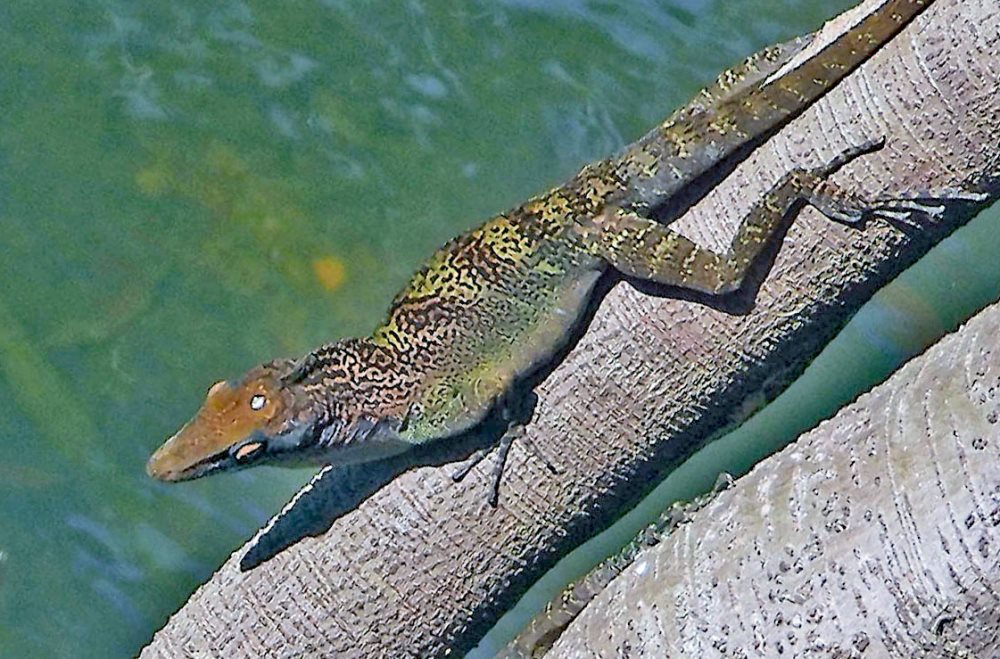
Aquatic Anole, A. vermiculatusThe Anoles are a diverse group of New World lizards, ranging from small species like the Carolina Anole (Anolis carolinensis) at 5 to 8 inches in length, to larger species like the Knight Anole (Anolis equestris) at 14-19 inches. With over 275 known species (possibly closer to 400), the Anoles are a significant presence in the reptile world.Males are typically larger than females and have dewlaps (throat fans), while both sexes have expanded toe pads. Most Anole species are arboreal, living in trees, but some can be found in canopy areas or on lower branches. A few species, such as the Aquatic Anole (A. aquaticus) and the Vermiculated Anole (A. vermiculatus), are even partially aquatic.
The Anoles are primarily insectivorous, but some species also incorporate fruit into their diets. Cannibalism has been observed in larger Anole species preying on smaller ones. The ability to change color, similar to chameleons, has earned some Anole species the nickname “American Chameleon.” Some species can change from green to brown or yellow in a matter of seconds, while others can only alter the intensity of their normal coloration.
Out of the large number of Anole species (most of which are found in the West Indies, Central and South America), only one is considered a confirmed native in the United States – the Carolina Anole. Some experts argue that a subspecies of the Bark Anole (A. distichus floridanus) may also be native, but this is still debated.
However, with warm temperatures found in central and southern Florida, several exotic Anole species have been introduced and have become established. The most successful of these is the Brown Anole, also known as the Cuban or Cuban Brown Anole (Anolis sagrei). This species can now be found in the Carolinas and Texas. Other established exotic species in southern Florida include:
Anolis allisoni, Cuban Blue-fronted Anole
Anolis.callainus, Dominican Green Anole (note: there are two other species with this common name)
Anolis cristatellus, Puerto Rican Crested Anole
Anolis coelestinus, also known as the Hispaniolan Green Anole
Anolis cybotes, Giant-headed Anole (found in Hispaniola)
Anolis distichus, Bark Anoles (originally 3 subspecies)
Anolis equestris, Cuban Giant or Knight Anole
Anolis garmani Jamaican Giant Anole (population in FL greatly reduced by occasional dips in winter temperatures)
Anolis peynadoi, Dominican Green Anole (1 of 3 species also known as “Hispaniolan Green Anole”)
Anolis porcatus, Cuban Green Anole
Anolis sagrei, Cuban Brown Anole


I never realized how diverse and fascinating anoles are until I visited this website. Kingsnake.com is a treasure trove of information for anyone interested in learning more about these incredible creatures.
I totally agree, Carol! Kingsnake.com is my go-to resource for all things anole-related. The articles and photos are not only educational but also showcase the beauty and uniqueness of these little reptiles.